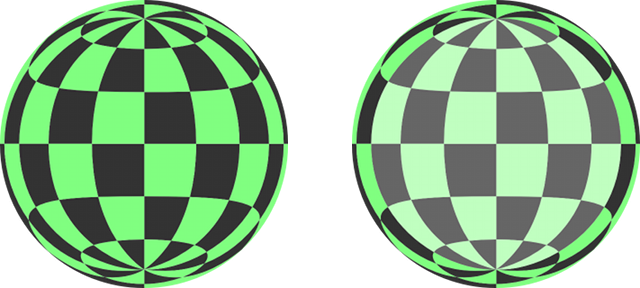Common sense dictates that if you look at a spherical object like a ball or a planet you can only see half the surface area of that object. But this is not true for neutron stars.
A neutron star is formed when the core of a relatively large star collapses in on itself in a supernova. Neutron stars are incredibly dense: one teaspoon of neutron star can have a mass of more than five trillion kilograms.
One of the best elaborations of Einstein’s Theory of General Relativity was given by John Wheeler:
“Mass tells space-time how to curve, and space-time tells mass how to move.”
But if space-time is curved then anything passing through space, whether it is matter or light, will follow a curved path. The gravitational field of a neutron star is so strong that it warps space, and warps space to such an extent that light emitted behind the star is warped around.

Diagram of a neutron star, viewed face-on.
In the diagram above each chequered section is 30° × 30°; note that both poles of the neutron star are clearly visible. The highlighted section on the right-hand diagram shows the area that would normally be visible if gravitational distortion were not present.
Normally 180° of latitude and longitude would be visible, but in this case the figure is nearly 260°, meaning that more than 70% of the neutron star’s surface area is visible.